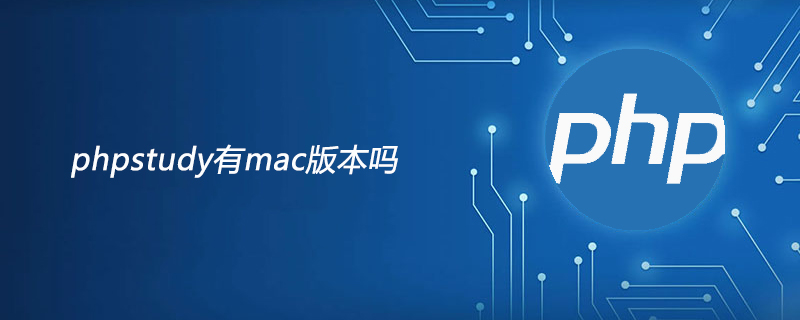phpstudy有mac版本嗎,如何在Mac系統下使用phpstudy

背景
最近在學習php,因為不想在環境搭建上花費太多功夫,再加上之前在linux和window上使用過phpstudy,這次在mac系統上也想使用phpstudy,可是上網查了一下,發現mac上並沒有相關的phpstudy安裝包,那怎麼辦,剛好之前用過vagrant,virtualbox配合linux版本的phpstudy即可。有了思路,接下來看看我們需要準備什麼東西來完成我們上面的想法
前置條件
##1. mac os系統2. vagrant3. virtualbox#4. git#5. phpstudy6. 離線版box開始處理
先安裝vagrant和virtualbox
下載vagrant mac版本安裝包,安裝直接拖到Application中即可,安裝virtualbox同樣的方式,安裝完之後,由於網絡環境不是很好,這裡就不直接使用vagrant 自己的box商店了,用自己離線下載的Centos 7 box 首先加入到vagrant 中,指令如下#新增離線box到vagrant中
vagrant box add centos/7 /Users/ylf/Desktop/centos-7.0-x86_64.box
新增之後可以可以用以下指令查看是否正確
vagrant box list
#建立Vagrantfile設定檔並執行虛擬機器
新建一個目錄,在目錄中建立Vagrantfile 檔案的內容如下
然後再對應的目錄中開啟終端,在終端機中輸入如下指令# -*- mode: ruby -*- # vi: set ft=ruby : # All Vagrant configuration is done below. The "2" in Vagrant.configure # configures the configuration version (we support older styles for # backwards compatibility). Please don't change it unless you know what # you're doing. Vagrant.configure("2") do |config| # The most common configuration options are documented and commented below. # For a complete reference, please see the online documentation at # https://docs.vagrantup.com. # Every Vagrant development environment requires a box. You can search for # boxes at https://vagrantcloud.com/search. config.vm.box = "centos/7" # config.vm.box_version = "1801.02" # Disable automatic box update checking. If you disable this, then # boxes will only be checked for updates when the user runs # `vagrant box outdated`. This is not recommended. # config.vm.box_check_update = false # Create a forwarded port mapping which allows access to a specific port # within the machine from a port on the host machine. In the example below, # accessing "localhost:8080" will access port 80 on the guest machine. # NOTE: This will enable public access to the opened port # config.vm.network "forwarded_port", guest: 80, host: 8080 # Create a forwarded port mapping which allows access to a specific port # within the machine from a port on the host machine and only allow access # via 127.0.0.1 to disable public access # config.vm.network "forwarded_port", guest: 80, host: 8080, host_ip: "127.0.0.1" config.ssh.username='root' config.ssh.password='vagrant' config.ssh.insert_key='true' # Create a private network, which allows host-only access to the machine # using a specific IP. # config.vm.network "private_network", ip: "192.168.33.10" # Create a public network, which generally matched to bridged network. # Bridged networks make the machine appear as another physical device on # your network. # config.vm.network "public_network" config.vm.network "public_network" , ip: "192.168.3.233" ,bridge: "en1: Wi-Fi (AirPort)" # Share an additional folder to the guest VM. The first argument is # the path on the host to the actual folder. The second argument is # the path on the guest to mount the folder. And the optional third # argument is a set of non-required options. # config.vm.synced_folder "../data", "/vagrant_data" # Provider-specific configuration so you can fine-tune various # backing providers for Vagrant. These expose provider-specific options. # Example for VirtualBox: # # config.vm.provider "virtualbox" do |vb| # # Display the VirtualBox GUI when booting the machine # vb.gui = true # # # Customize the amount of memory on the VM: # vb.memory = "1024" # end # # View the documentation for the provider you are using for more # information on available options. # Enable provisioning with a shell script. Additional provisioners such as # Puppet, Chef, Ansible, Salt, and Docker are also available. Please see the # documentation for more information about their specific syntax and use. # config.vm.provision "shell", inline: <<-SHELL # apt-get update # apt-get install -y apache2 # SHELL end登入後複製
vagrant up && vagrant ssh
稍等片刻,虛擬機器應該已經創建好了,這時候系統會讓輸入密碼,vagrant創建的虛擬機預設密碼是vagrant 在終端中輸入vagrant ,這些終端輸入密碼時不會顯示輸入的字符,輸入完之後,直接敲回車即可。到這裡linux環境已經配置好了。
簡單的解釋一下上面的設定項目是什麼意思
#設定使用的box為centos/7
config.vm.box = "centos/7"
設定預設使用者為root,不然預設的使用者為vagrant
config.ssh.username='root' config.ssh.password='vagrant' config.ssh.insert_key='true'
提示: 這裡的ip位址大家根據自己的電腦實際的ip來設置,ifconfig 查到具體的ip ,這裡的ip設置為與其類似的,bridge 是橋接網卡的,我在這裡使用的無線網路卡,如果是用的有線連接,請根據ifconfig查出來的值具體設定
config.vm.network "public_network" , ip: "192.168.3.233" ,bridge: "en1: Wi-Fi (AirPort)"
到這裡應該虛擬機器已經設定完畢
#安裝phpstudy
把下載好的phpstudy-all.bin 放到Vagrantfile同級目錄,然後複製phpstudy-all.bin安裝套件到~目錄
cp /vagrant/phpstudy-all.bin ~/
然後執行授權,安裝
chmod +x ~/phpstudy-all.bin ~/phpstudy-all.bin
phpstudy restart
line 82: killall: command not found
yum install psmisc
/phpstudy/mysql/bin/mysql -u root -proot
use mysql;
grant all privileges on *.* to 'root'@'%' identified by 'root'; flush privileges;
systemctl stop firewalld
systemctl disabled firewalld
以上是phpstudy有mac版本嗎,如何在Mac系統下使用phpstudy的詳細內容。更多資訊請關注PHP中文網其他相關文章!

熱AI工具

Undresser.AI Undress
人工智慧驅動的應用程序,用於創建逼真的裸體照片

AI Clothes Remover
用於從照片中去除衣服的線上人工智慧工具。

Undress AI Tool
免費脫衣圖片

Clothoff.io
AI脫衣器

AI Hentai Generator
免費產生 AI 無盡。

熱門文章

熱工具

記事本++7.3.1
好用且免費的程式碼編輯器

SublimeText3漢化版
中文版,非常好用

禪工作室 13.0.1
強大的PHP整合開發環境

Dreamweaver CS6
視覺化網頁開發工具

SublimeText3 Mac版
神級程式碼編輯軟體(SublimeText3)

熱門話題
 適用於 Ubuntu 和 Debian 的 PHP 8.4 安裝和升級指南
Dec 24, 2024 pm 04:42 PM
適用於 Ubuntu 和 Debian 的 PHP 8.4 安裝和升級指南
Dec 24, 2024 pm 04:42 PM
PHP 8.4 帶來了多項新功能、安全性改進和效能改進,同時棄用和刪除了大量功能。 本指南介紹如何在 Ubuntu、Debian 或其衍生版本上安裝 PHP 8.4 或升級到 PHP 8.4
 如何設定 Visual Studio Code (VS Code) 進行 PHP 開發
Dec 20, 2024 am 11:31 AM
如何設定 Visual Studio Code (VS Code) 進行 PHP 開發
Dec 20, 2024 am 11:31 AM
Visual Studio Code,也稱為 VS Code,是一個免費的原始碼編輯器 - 或整合開發環境 (IDE) - 可用於所有主要作業系統。 VS Code 擁有大量針對多種程式語言的擴展,可以輕鬆編寫
 您如何在PHP中解析和處理HTML/XML?
Feb 07, 2025 am 11:57 AM
您如何在PHP中解析和處理HTML/XML?
Feb 07, 2025 am 11:57 AM
本教程演示瞭如何使用PHP有效地處理XML文檔。 XML(可擴展的標記語言)是一種用於人類可讀性和機器解析的多功能文本標記語言。它通常用於數據存儲
 php程序在字符串中計數元音
Feb 07, 2025 pm 12:12 PM
php程序在字符串中計數元音
Feb 07, 2025 pm 12:12 PM
字符串是由字符組成的序列,包括字母、數字和符號。本教程將學習如何使用不同的方法在PHP中計算給定字符串中元音的數量。英語中的元音是a、e、i、o、u,它們可以是大寫或小寫。 什麼是元音? 元音是代表特定語音的字母字符。英語中共有五個元音,包括大寫和小寫: a, e, i, o, u 示例 1 輸入:字符串 = "Tutorialspoint" 輸出:6 解釋 字符串 "Tutorialspoint" 中的元音是 u、o、i、a、o、i。總共有 6 個元
 在PHP API中說明JSON Web令牌(JWT)及其用例。
Apr 05, 2025 am 12:04 AM
在PHP API中說明JSON Web令牌(JWT)及其用例。
Apr 05, 2025 am 12:04 AM
JWT是一種基於JSON的開放標準,用於在各方之間安全地傳輸信息,主要用於身份驗證和信息交換。 1.JWT由Header、Payload和Signature三部分組成。 2.JWT的工作原理包括生成JWT、驗證JWT和解析Payload三個步驟。 3.在PHP中使用JWT進行身份驗證時,可以生成和驗證JWT,並在高級用法中包含用戶角色和權限信息。 4.常見錯誤包括簽名驗證失敗、令牌過期和Payload過大,調試技巧包括使用調試工具和日誌記錄。 5.性能優化和最佳實踐包括使用合適的簽名算法、合理設置有效期、
 解釋PHP中的晚期靜態綁定(靜態::)。
Apr 03, 2025 am 12:04 AM
解釋PHP中的晚期靜態綁定(靜態::)。
Apr 03, 2025 am 12:04 AM
靜態綁定(static::)在PHP中實現晚期靜態綁定(LSB),允許在靜態上下文中引用調用類而非定義類。 1)解析過程在運行時進行,2)在繼承關係中向上查找調用類,3)可能帶來性能開銷。
 什麼是PHP魔術方法(__ -construct,__destruct,__call,__get,__ set等)並提供用例?
Apr 03, 2025 am 12:03 AM
什麼是PHP魔術方法(__ -construct,__destruct,__call,__get,__ set等)並提供用例?
Apr 03, 2025 am 12:03 AM
PHP的魔法方法有哪些? PHP的魔法方法包括:1.\_\_construct,用於初始化對象;2.\_\_destruct,用於清理資源;3.\_\_call,處理不存在的方法調用;4.\_\_get,實現動態屬性訪問;5.\_\_set,實現動態屬性設置。這些方法在特定情況下自動調用,提升代碼的靈活性和效率。







